Many may not know it but the
Mazda CX-5 is a very special vehicle for the Japanese carmaker for a number of reasons. First, it’s the very first model to be created by Mazda after its split with Ford, which is why it effectively replaced both the
Mazda Tribute, which was essentially a rebadged first-generation
Ford Escape, and the
Mazda CX-7. Second, it’s the first model to bear Mazda's
"Kodo: Soul of Motion" design language, which has now been adopted across its entire model range, including the new-generation
Mazda CX-9. And third, it’s the first model to feature Mazda’s
Skyactiv Technology suite, which essentially means that Mazda reengineered what a car is supposed to be to make it stronger yet lighter and more fuel-efficient.
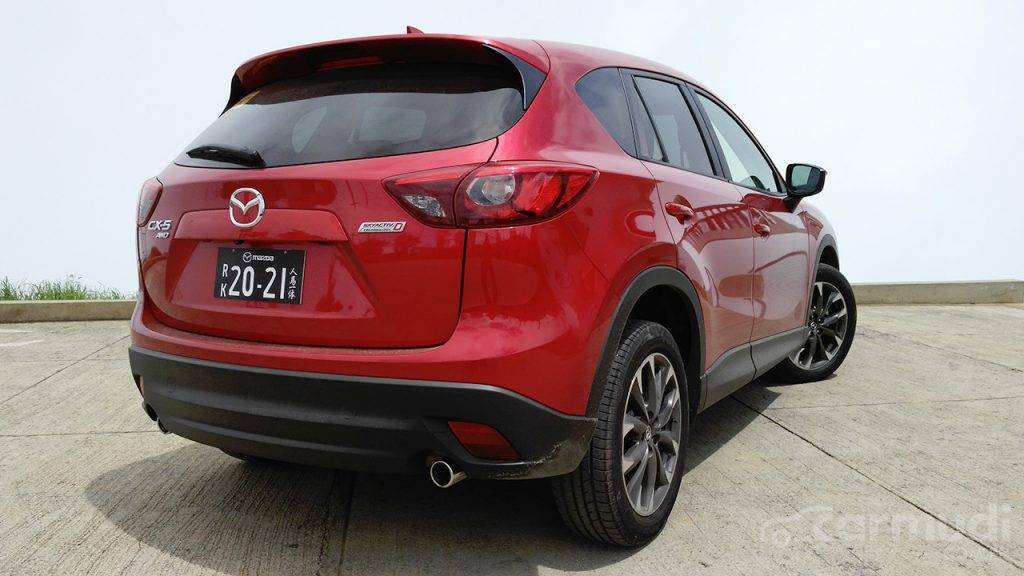
STYLING – 8/10
As is the case with most midlife refresh, it’s done to give vehicles a new lease in life before it’s due for a full model change. In the CX-5’s case, it’s a very welcome one because prior to the update, Mazda’s crossover wasn’t a very popular one. The update though, coupled with Mazda’s commendable
Yojin3 Total Care aftersales package, has given its vehicle owners very little to complain but a lot of reasons to rejoice.

EXTERIOR
While the CX-5’s silhouette remains, the subtle changes to the exterior has given the vehicle a newer, cleaner look. Gone is the beak-like grille for a more traditional
five-slot grille which gives the vehicle a more mature countenance. Also gone is the halogen headlights for an
adaptive LED pair with LED-like daytime running lights that look like mascara around the projector housing. Out back, the only significant change is the design of the taillights, with the brake lights now mimicking the design of the daytime running lights up front.
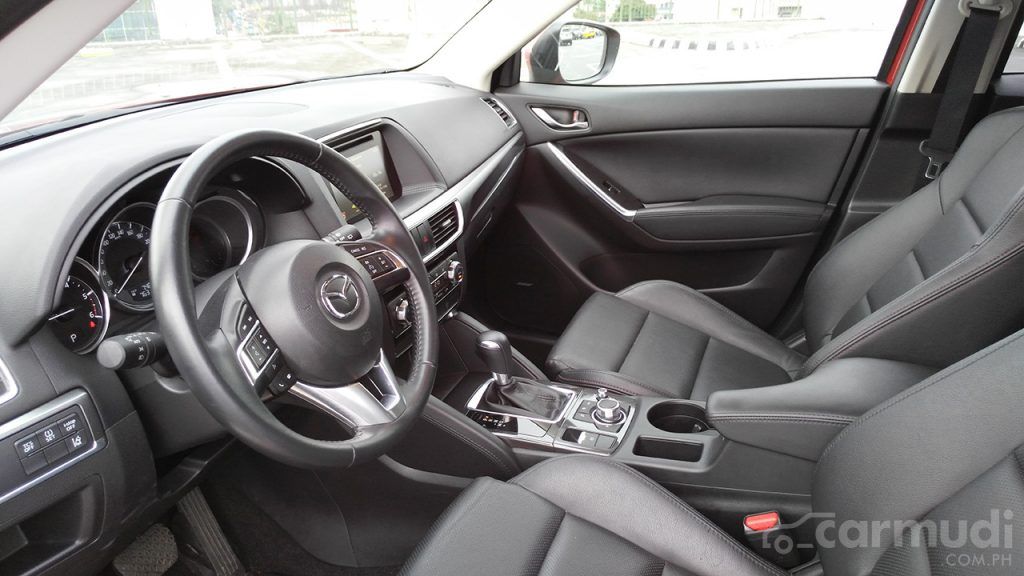
INTERIOR
Black cowhide leather sees extensive use throughout the cabin as you’ll see the material on the seats, the door panel, the steering wheel, the center console, and even on the dashboard. The red stitching adds a touch of sportiness to the interior. It’s a shame though that the midlife refresh of the CX-5 didn’t give it the same dashboard design as that found in the Mazda 3 and Mazda 6, as the
seven-inch touchscreen is nestled deep into the dashboard unlike in the two aforementioned models where it's standing upright and front and center outside the dashboard like a permanently-mounted tablet. Still, thanks to the
Mazda Command Control System, most of the buttons you’d usually find on the dashboard and center console have been eliminated, with the controls for the
automatic dual-zone air-condition system as the lone holdover from the era of buttons, levers, and switches. To make way for the
Command Control System, Mazda eliminated the traditional hydraulic parking brake and replaced it with an electronically-activated button. Thankfully, it still operates like the traditional one: while you’re stepping on the brake, you either pull it up with your finger to activate or pull it up and then push it down to deactivate it. Very intuitive.
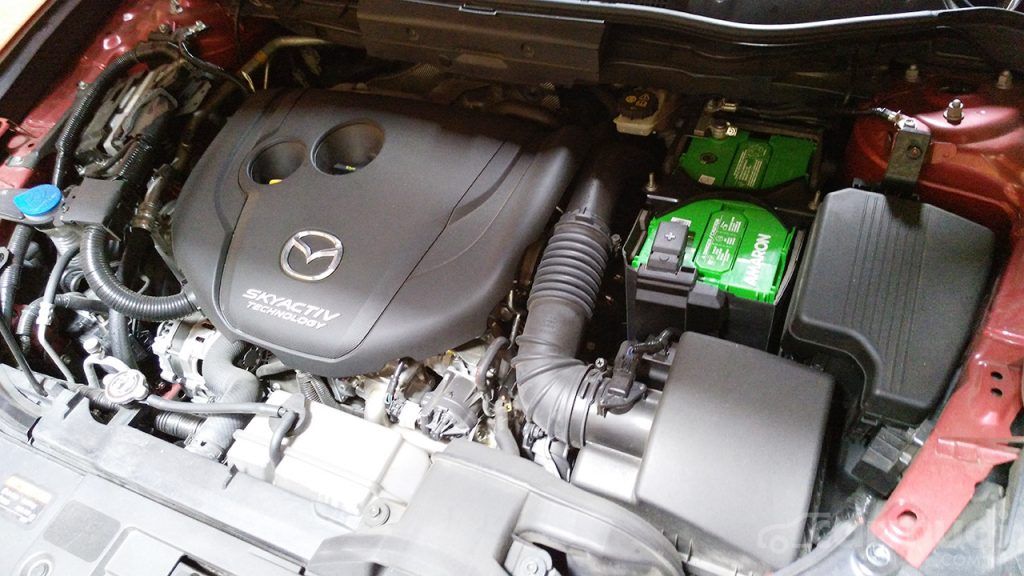
ENGINE & PERFORMANCE – 9/10
The CX-5 Skyactiv-D is powered by the same
2.2-liter diesel mill that propels the Mazda 6 Skyactiv-D, which means it has the same power output of
173hp and
420Nm of torque. With that kind of power available under your right foot, it’s no wonder the climb up to the mountains of Baguio City hardly posed a problem for the vehicle, despite its
1,586kg of curb weight and enough change of clothes for a family of four on a weekend getaway to the Summer Capital of the Philippines in the cargo area. The
six-speed Skactiv-Drive six-speed automatic proved capable enough to be left alone throughout the drive although if needed, some manual control can be exerted through it by pulling the lever all the way down into Drive and to the left, with upshifts achieved by pulling the stick down and then pushing it upwards for downshifts.
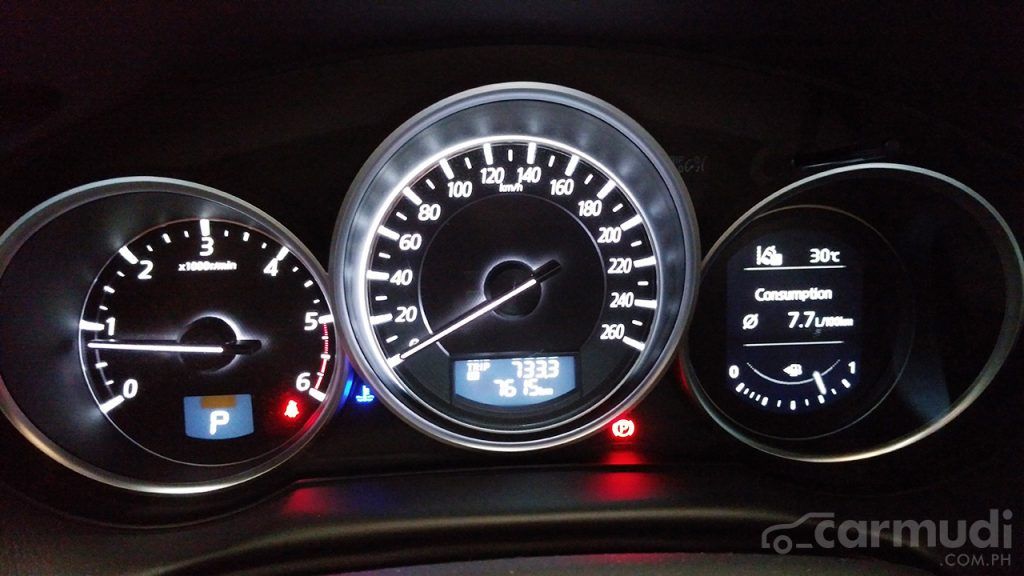
FUEL ECONOMY – 9/10
The week that we had the CX-5 Skyactiv-D, we drove it through the stop-and-go traffic of the Alabang-Zapote road--on a weekend, no less--and then around Metro Manila before taking it some 300 kilometers up north to Baguio City through the picturesque Kennon Road. Once we were there, we drove it around the different parts of the city which meant going up and down the mountainous area for the next few days. Since Mazda Philippines turned over the keys to us, we never had to fill up the
58-liter tank. As a precaution though, on our way back to Manila through Marcos Highway, we topped it up since it had just over 1/4 tank of fuel left. To our surprise, when we got home, we consumed less than a fourth of fuel—and that’s with a side trip in the Clark Freeport Zone along the way--so theoretically, we could’ve driven the CX-5 Skyactiv-D around Metro Manila, drove it up, around, and then down from Baguio, through Clark, and then back home to Manila on a tank of diesel fuel. Based on the fuel gauge meter, our entire trip consumed
7.7 liters for
every 100 kilometers or
12.99km/L. And let’s not forget that a good portion of that trip had us pressing down on the throttle a little firmer than most on the climb up Kennon Road and on the drive down Marcos Highway to overtake slower vehicles so the fuel mileage would even be better if you’ll be driving this around a flat area of the country where traffic is the exception rather than the norm.
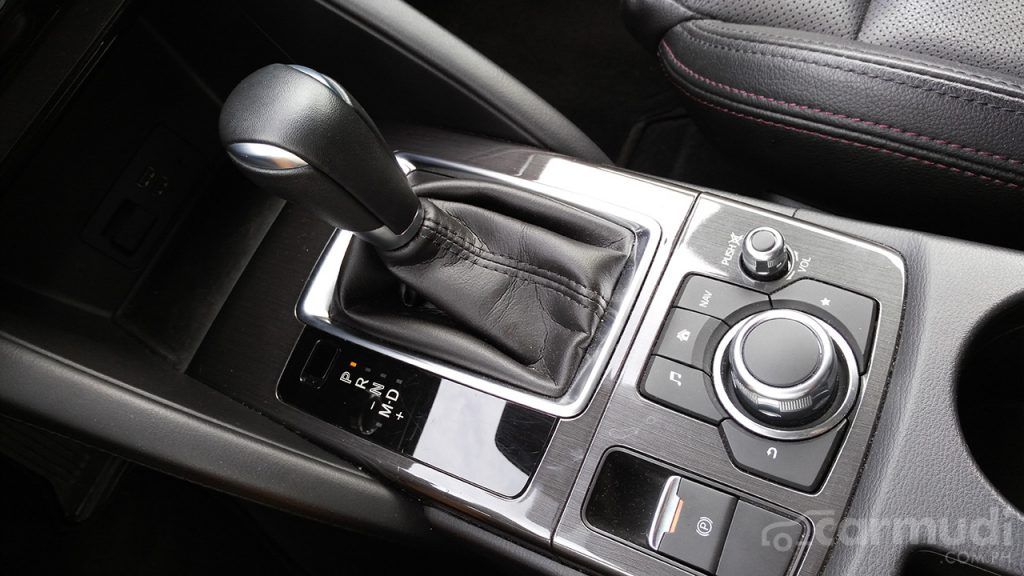
FEATURES – 9/10
One feature Mazda has that you’d wish every carmaker had is its
Command Control System. A feature in luxury cars about a decade ago, Mazda’s take on the multi-function system to control most of the vehicle’s infotainment features has finally trickled down to mass-market vehicles. With the Command Control System, the driver can, well, control almost everything about the car--from the entertainment and navigation system to when the doors lock and unlock--with just one hand by either pulling and pushing or rotating the knob. In addition, it’s intuitively laid out that operating it will soon seem natural, with only quick glances on the screen to know what you’re doing. It’s definitely safer than operating touchscreen systems used in other vehicles since the Command Control System still gives you some tactile feel. If you still prefer touchscreen systems though, you’ll be glad to know that the
seven-inch LCD monitor on the CX-5 is just that.

DRIVING IMPRESSIONS – 8/10
Like most vehicles in Mazda’s lineup, the CX-5 Skyactiv-D has a very sporty orientation. Despite its top-heavy design, the crossover feels firmly planted on the ground when taking corners adventurously, with only some slight body roll noticeable from the
MacPherson struts front and
multi-link beam rear suspensions. Power delivery from the Skyactiv-D mill is very linear, with very negligible shift shock from the slushbox save for when you prefer to swap cogs yourself. Shame though that it doesn't have steering wheel-mounted paddle shifters to complete the sporting feel.
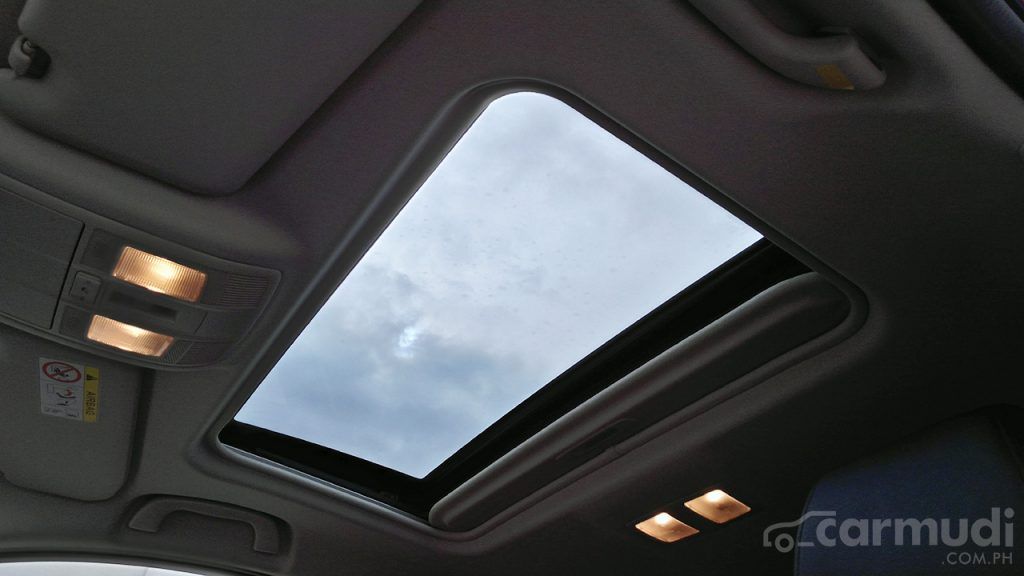
VERDICT – 9/10
There's really nothing to complain about the Mazda CX-5 Skyactiv-D. The refreshed exterior gives it a more mature countenance that it didn't have before, it's luxuriously appointed with leather seats all around with contrasting stitches to give it a sporty flavor that matches its driving dynamics, and it's both
frugal AND powerful. Most crossovers are really cars on stilts, but with the Skyactiv-D diesel engine, the CX-5 comes close to crossing the fine line between an athletic crossover and a utilitarian SUV. Sure, its
P1.985 million price tag puts it over P200,00 more than the 2.5-liter gasoline-fed CX-5 AWD Sport variant but that's because you're getting more out of the CX-5 Skyactiv-D like prodigious amount of torque and impressive fuel economy. If you want the power of a diesel SUV in the package of a compact crossover that's been fitted with the luxurious interior of a mdsize sedan, there's really no other car in the market that fits all three demands than the Mazda CX-5 Skyactiv-D.
PROS & CONS
PROS
- It's very well-appointed for its price.
- Thanks to its diesel engine and its Skyactiv features, it’s a very fuel-efficient crossover.
CONS
- All that plush leather isn't good for a tropical climate like the Philippines.
- Parts concerning the i-STOP and i-ELOOP systems could prove to be costly in the long run, as the car's battery alone is more expensive than usual.
BREAKDOWN
STYLING - 8/10
ENGINE & PERFORMANCE - 9/10
FUEL ECONOMY - 9/10
FEATURES - 9/10
DRIVING IMPRESSIONS - 8/10
[gallery size="vw_two_third_thumbnail_no_crop" ids="13578,13580,13581,13584,13583,13589,13587,13585,13586,13588">








